

Anthony Crawford
1990 Lamborghini Countach review
6 Days Ago
Dodge is getting a new small crossover in the shape of a restyled Alfa Romeo Tonale, with only the punchier powertrains available.

News Editor
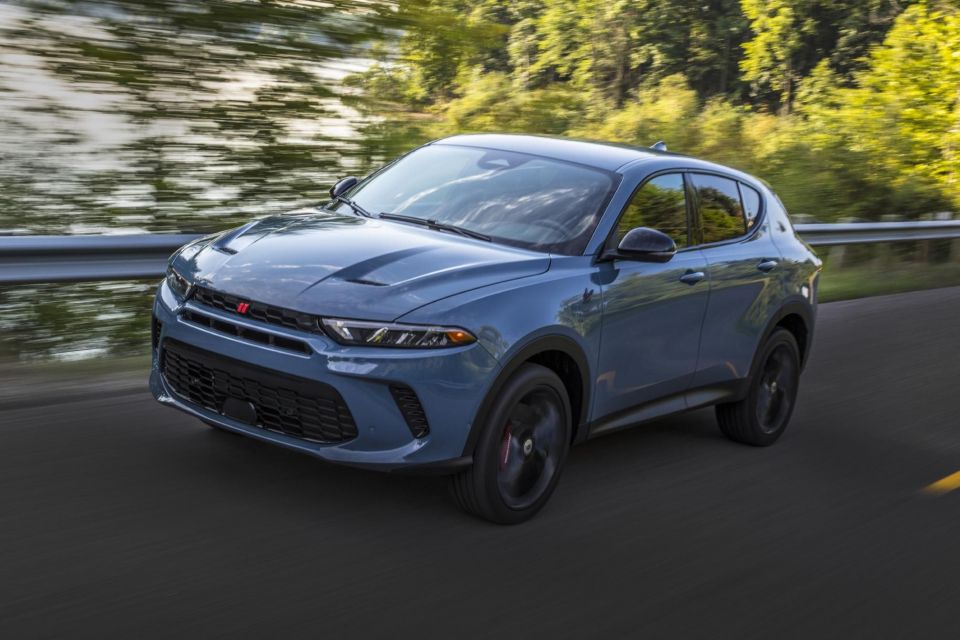

News Editor
The Hornet has been revealed as the Dodge brand’s first all-new model in just over a decade, and as expected it closely resembles the Alfa Romeo Tonale.
It’s the first electrified model for the Dodge brand, which has been positioned as a performance car brand within the Stellantis armada, and will arrive in US showrooms later this year.
It’ll use only the two most powerful engines from the Tonale, which happen to be the two engines Alfa Romeo won’t offer in the model when it arrives locally early in 2023.
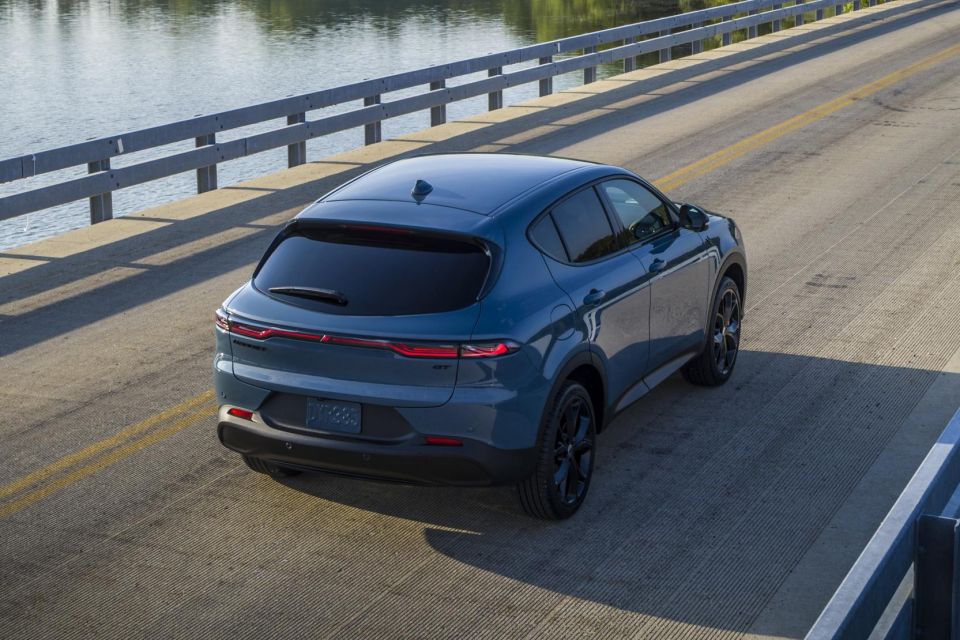
The base GT – which Dodge says is the quickest, most powerful SUV under US$30,000 (A$43,352) – is powered by a turbocharged 2.0-litre four-cylinder engine producing 198kW of power and 400Nm of torque and mated with a nine-speed automatic transmission.
In Sport Mode, the GT can do the 0-60mph (0-96km/h) sprint in 6.5 seconds. A limited-slip differential is standard.
The plug-in hybrid R/T will follow next spring, using a 1.3-litre four-cylinder engine and a rear-mounted electric motor, a 15.5kWh battery pack, and a six-speed automatic transmission.
Total system outputs are 212kW and 519Nm, with claimed electric range of over 48km.
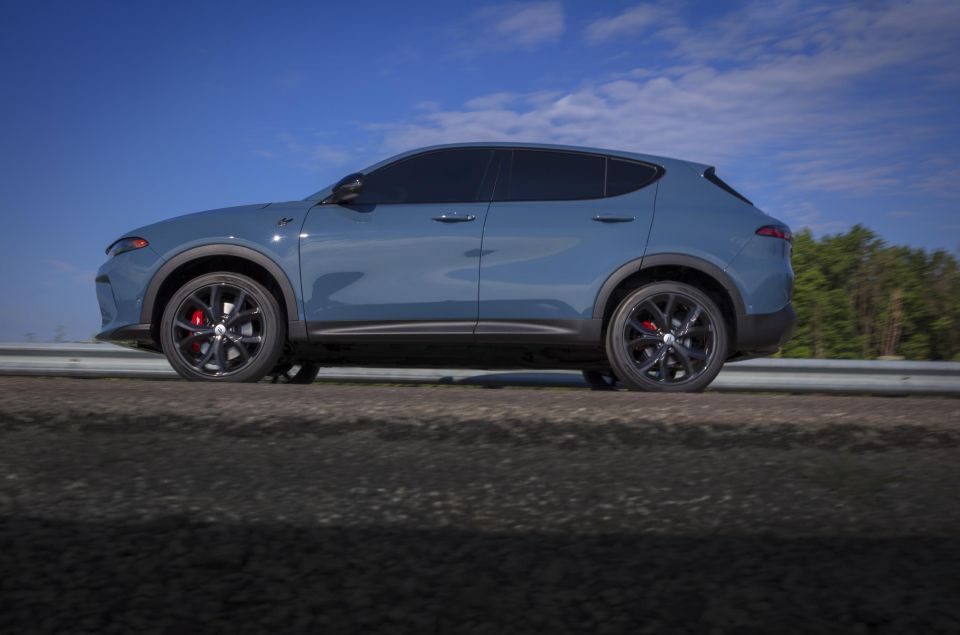
A PowerShot feature provides a boost of 18kW for 15 seconds at a time, which Dodge says shaves a second off the 0-60mph time (to 6.1 seconds). It’s activated by pulling both of the paddle shifters and performing a pedal kickdown.
The electrified R/T also features three PHEV drive modes – a hybrid mode, a pure EV mode and an E-Save mode to preserve battery charge – and features both regenerative braking and a coasting function.
Both the GT and R/T come standard with all-wheel drive, Koni frequency selective damping shocks, and dynamic torque vectoring, with the R/T gaining standard Brembo front brakes.
Though the middle section is the same as the Tonale, the Hornet receives unique front and rear end styling.
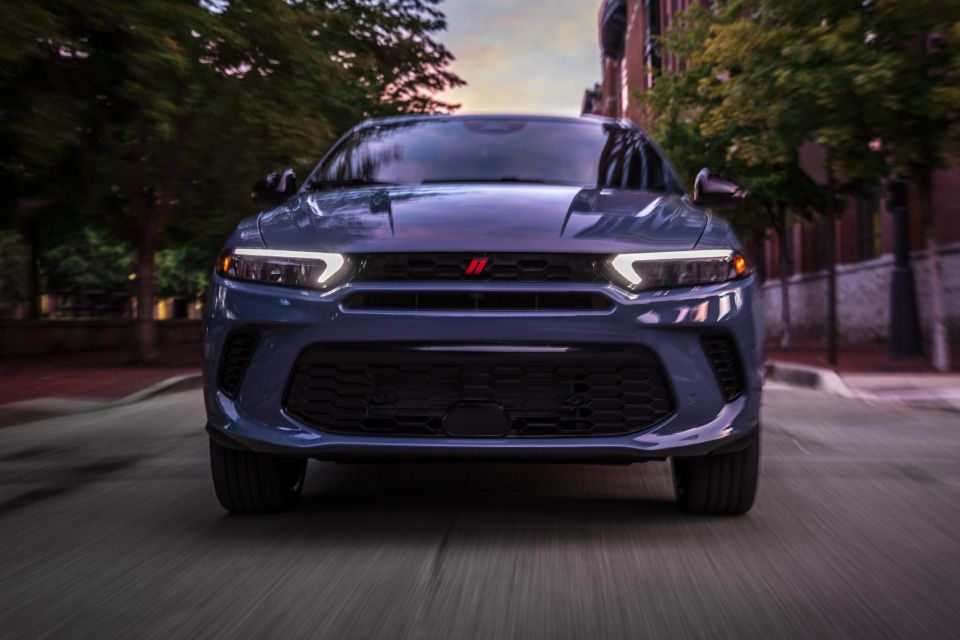
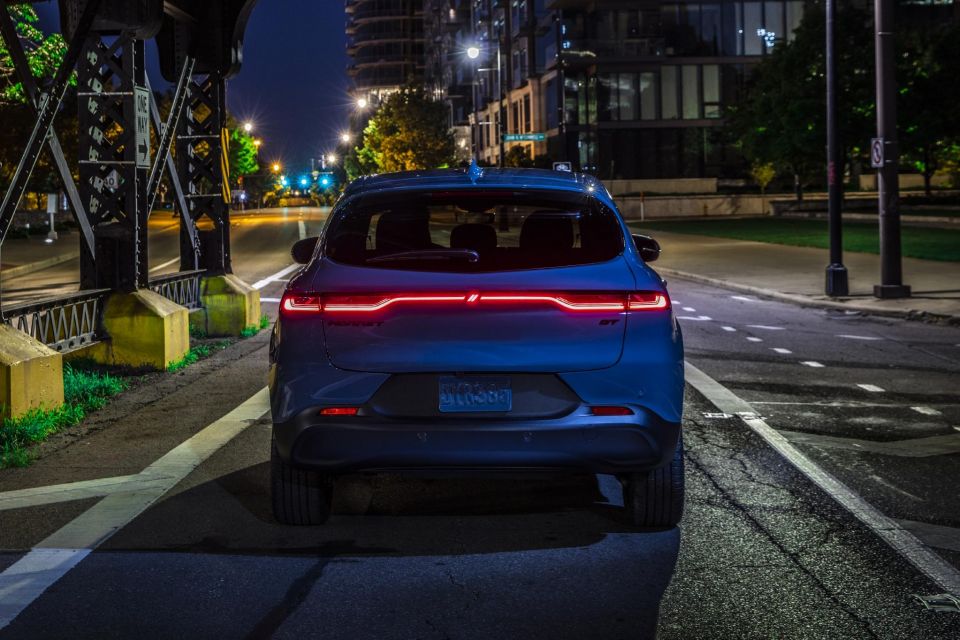
That includes a version of Dodge’s “mail slot” grille, a vented bonnet, and slim LED headlights.
Down back, there’s a full-width lighting assembly that, in a first for Dodge, features an illuminated version of the brand’s Rhombi logo in the centre.
17-inch alloy wheels are standard on the GT and 18s on the R/T, but both variants are offered with a Blacktop package that brings unique 18-inch alloy wheels and gloss black exterior trim.
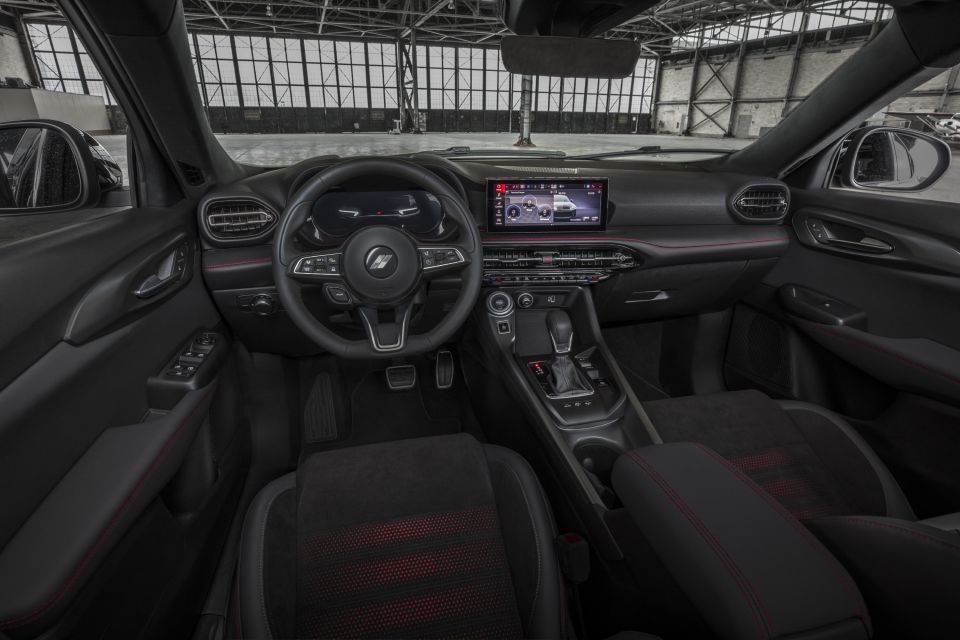
A Track Pack option on both variants upgrades to 20-inch alloy wheels and Alcantara upholstery, while also adding adjustable dampers.
There are seven exterior colours on offer, many of which have clever names in Dodge tradition like Gray Cray, Blu Bayou and 8 Ball.
The driver-oriented interior is essentially identical to the Tonale’s, differing only in details like the shape of the air vents, some minor switchgear, and the graphics for the standard 12.3-inch digital instrument cluster and 10.25-inch touchscreen infotainment system.
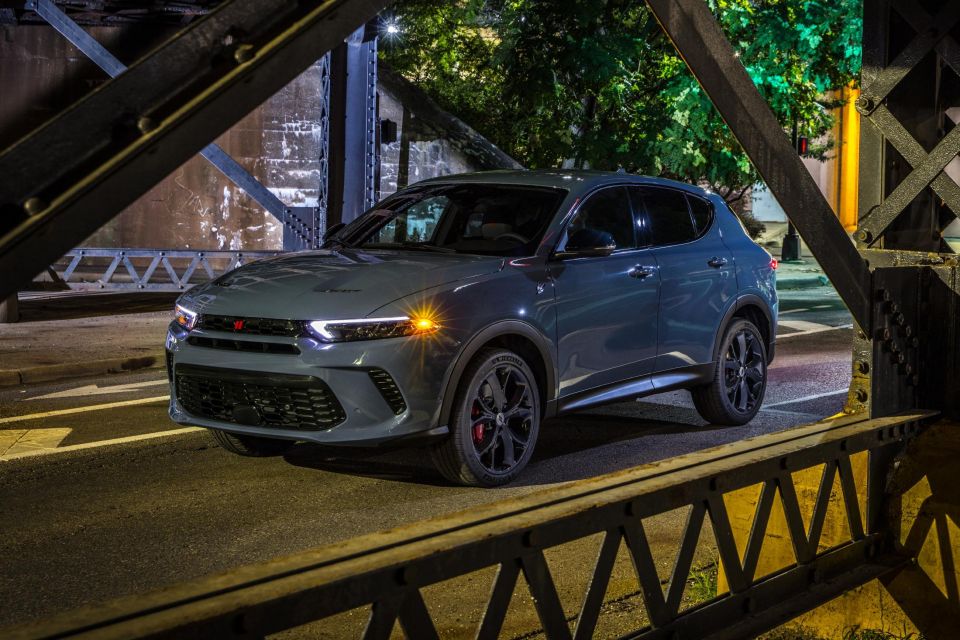
The touchscreen runs on the latest UConnect 5 operating system, with wireless Android Auto and Apple CarPlay.
GT Plus and R/T Plus models feature leather upholstery, available in red, plus a 14-speaker Harman/Kardon sound system.
Standard safety equipment on the Hornet includes autonomous emergency braking, lane-keep assist, blind-spot monitoring and rear cross-traffic alert, with an optional Tech Pack adding adaptive cruise control, intelligent speed assist, traffic sign recognition, and a lane-centring system for Level 2 autonomous driving.
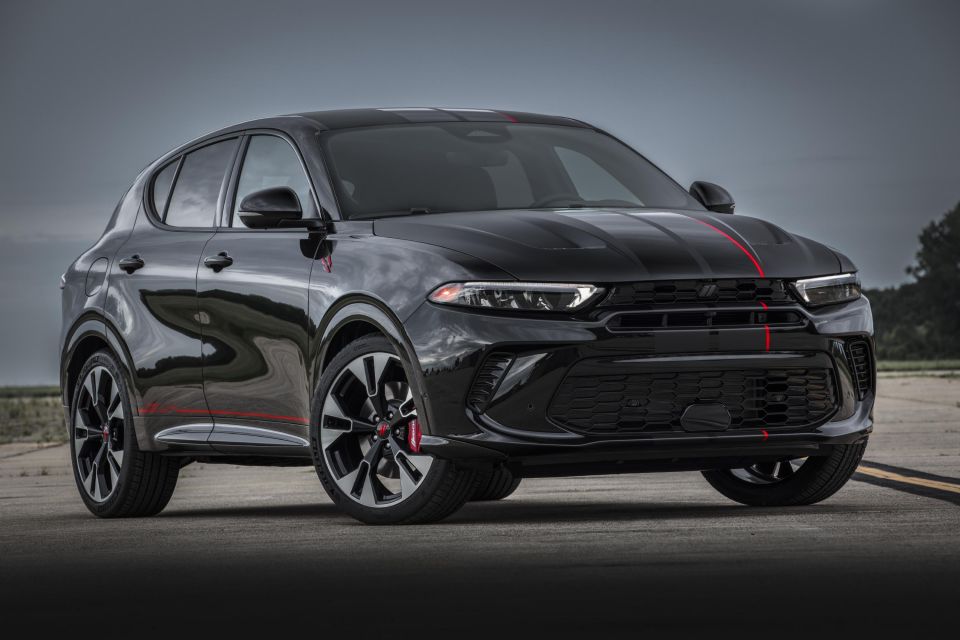
In addition to revealing the R/T and GT, Dodge has also revealed a concept that dusts off a classic Dodge nameplate.
The Hornet GT GLH Concept – named after the Shelby-fettled Omni GLH hot hatch of the 1980s, and short for “Goes Like Hell” – is equipped with a raft of performance part upgrades from Dodge’s Direct Connection range.
Based on the GT, Dodge says the GT GLH actually boasts a better power-to-weight ratio than the old hot hatch, and includes a raft of Direct Connection modifications like a lowered suspension, stage kit and an unrestricted dual exhaust, as well as unique stripes and 20-inch alloy wheels.
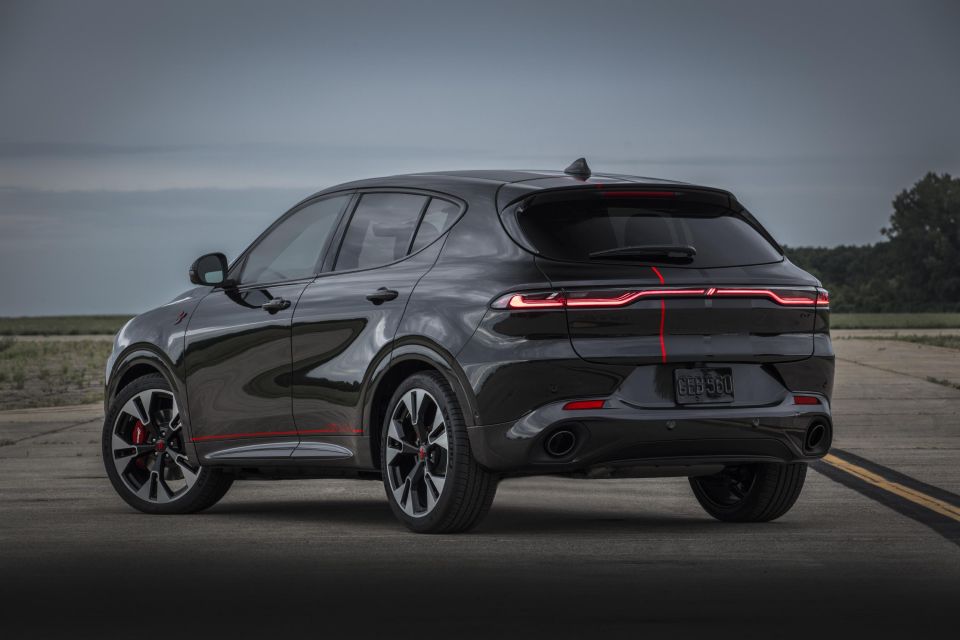
Direct Connection parts will be available at Dodge Power Brokers dealers.
The Hornet is perhaps surprisingly Dodge’s first small crossover ever, unless you count the butch-looking Caliber hatchback of the 2000s.
It’s considerably smaller than the defunct Journey, let alone Dodge’s existing lineup – the large Durango SUV, and the full-sized Charger and Challenger which will end production after the 2023 model year.
The Hornet will be produced alongside the Tonale at a plant outside of Naples in Italy, making it the first Italian-built Dodge.
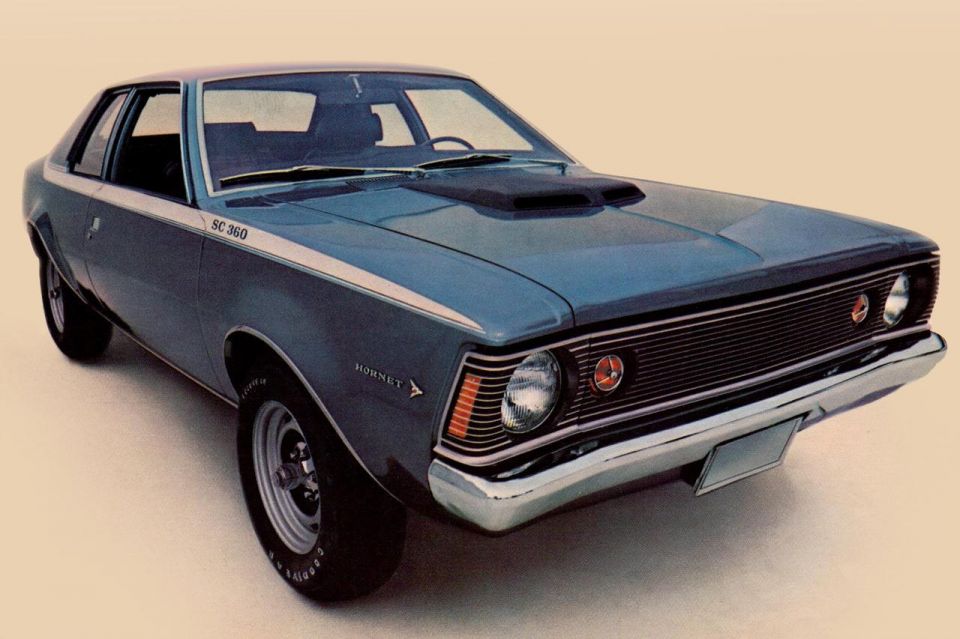

Dodge is calling the Hornet a “gateway” car to its so-called Brotherhood of Muscle, but it’s also a gateway to full electrification.
It will be followed in 2024 by a production version of Dodge’s “e-muscle” concept car on the new STLA Large architecture.
The Hornet name has some performance heritage. It was first used on the Hudson Hornet in 1951, which was acclaimed for its performance in NASCAR, and then on the AMC Hornet in 1970 which spawned the hot V8-powered SC/360.
The name wasn’t used again until well after the Chrysler Corporation acquired the American Motors Corporation, with Dodge using it on a sporty hatchback concept in 2006.
William Stopford is an automotive journalist based in Brisbane, Australia. William is a Business/Journalism graduate from the Queensland University of Technology who loves to travel, briefly lived in the US, and has a particular interest in the American car industry.


Anthony Crawford
6 Days Ago


Matt Campbell
5 Days Ago


James Wong
4 Days Ago


Max Davies
2 Days Ago


Josh Nevett
1 Day Ago


Josh Nevett
20 Hours Ago